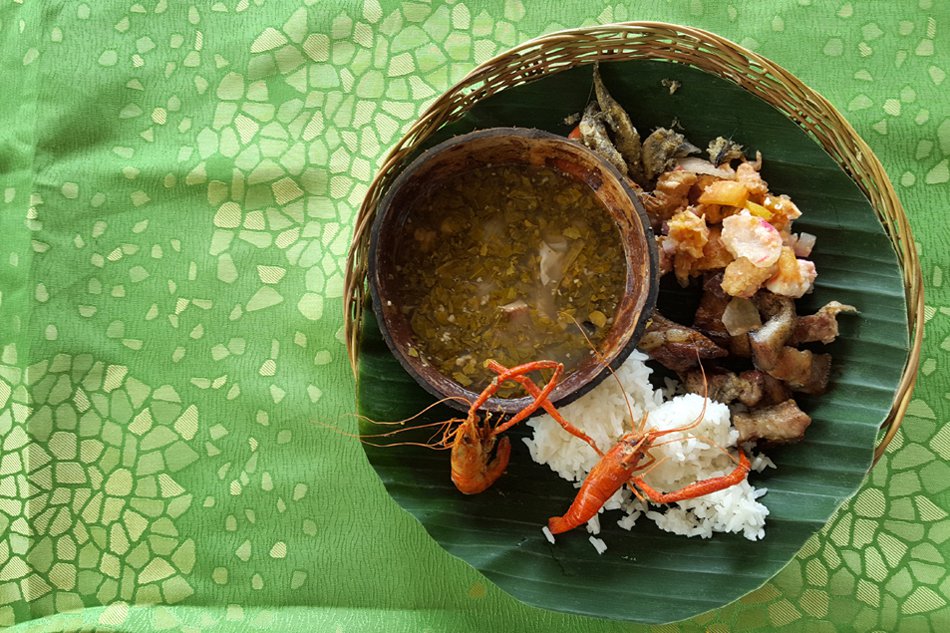
Nueva Ecija was created as a military comandancia in 1777 by Governor GeneralClavería, with the capital, Josean at Baler (now part of Aurora). It was formerly part of the province of Pampanga. From its humble beginning, its land area grew to cover almost the entire island of Luzon. Spanish Records in the Philippines recognizes 2 Spanish countries in the Pacific-- Las Islas Filipinas and Nueva Écija. Poverty was the only reason why Nueva Ecija was not given recognition as a separate country from the Philippines by the King of Spain in 1840s.From 1777 to 1917, Nueva Ecija's territory was however subdivided to give way to the creation of other provinces. The Province of Tayabas (now Aurora and Quezon) including Polillo Islands, the provinces of Palanan (now Isabela), Cagayan, the province of Nueva Vizcaya, the territory which became part of the Province of Quirino, and the province of Manila north of the province of Tondo in 1867, and the District of Morong (now Rizal) were among those created out of Nueva Ecija.
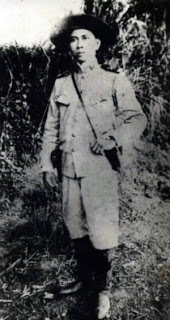
During World War II the Imperial Japanese Army entered the province and Nueva Ecija was taken in 1942. On March 29, 1942, under the leadership of Luis Taruc theHukbalahap (Hukbo ng Bayan Laban sa Hapon-People's Army Against the Japanese) was organized in Sitio Bawit, Barrio San Julian in the town of Cabiao. It was perceived to be the military arm of the Partido Komunista ng Pilipinas (Communist Party of the Philippines), that brought about the beginning of the early organized resistance of the Filipino people. In 1945, combined American and Filipino soldiers liberated Nueva Ecija with the recognized guerrillas continuing to harass the Japanese at every opportunity. When Filipino soldiers of the 21st, 22nd, 23rd, 25th and 26th Infantry Division of the Philippine Commonwealth Army and the 2nd Infantry Regiment of the Philippine Constabulary was re-invading launches to entering liberated the province of Nueva Ecija and helping recognized guerrilla resistance fighter units, the Hukbalahap Communist guerrillas and the American troops against the Japanese Imperial forces during theInvasion of Nueva Ecija. On January 30, 1945 American Army Rangers, Alamo scoutsand Filipino guerrillas conducted a raid to liberate Allied civilians and prisoners of war in Cabanatuan, this was successful with over 516 rescued. By January 31, 1945, the liberated civilians and POWs reached Talavera, the rescue is commemorated inTalavera. The province was named after the old city of Écija in Seville, Spain. In 1896, Nueva Ecija became one of the first provinces to revolt against Spanish rule, and one of the provinces which declared its independence in 1898.
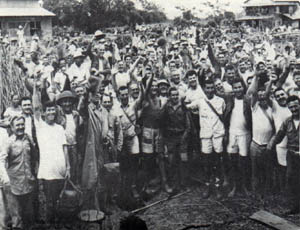
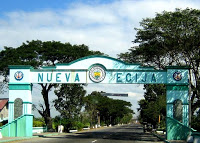
The Nueva Ecija Arch entering from Bulacan. Nueva Ecija is the largest province and the biggest rice producer of Central Luzon and the Philippines, thus, often referred to as the “Rice Bowl of the Philippines.”

Bongabon is regarded as the mass producer of Onion in Nueva Ecija. The resthouse of the Quezon family is located in this barrio, along the National Highway going to Baler Aurora. It is also the place of death of Mrs. Aurora Quezon, wife of former Philippine President Manuel Luis Quezon.
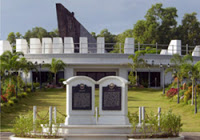
Camp Pangatian (Cabanatuan City) Began as a military training camp for twenty years until converted into a concentration camp for allied prisoners of war during the Japanese occupation. A popular tourist destination among war veterans by way of the WWII Veteran’s Homecoming Program.

Minalungao Park
Declared as a national park, it features a breathtaking view of the narrow but deep Penaranda River. On both sides of the river bank are 16 meter high limestone walls. The ridge formation of white sculptured limestone walls shows the might of the great
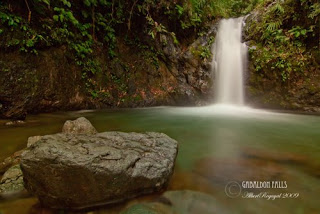
Gabaldon Falls
The lure of Gabaldon, Nueva Ecija. The ten-feet falls are surrounded by huge rock formations and rippling ice-cold water. Located within the 200-hectare Sabani Estate Agricultural College.
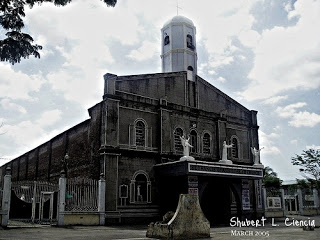
Church of Penaranda (Nueva Ecija) – The church of Penaranda was erected in 1869 by Fr. Florentino Samonte. Construction was continued by Fr. Candicho San Miguel from 1879–1881 and by Fr. Santos Vega from 1887-1889. From 1889 to 1891, the parochial house of bricks and wood was built by Fr. Valentin Gatode la Fuente.

Holy Week Rituals of Puncan The unique Holy Week rites of Puncan, one of the oldest towns in Nueva Ecija, are woven in folklore. Aside from the differing dialect, Pangasinense, widely used in Puncan, its distinct Lenten rituals include a hide-and-seek routine between the “Flagellante” and “Hudyo,” a children’s parade, and a choreographed version of Christian penitential rites in which participants with charcoal-smeared faces beat bamboos.
The province is the largest in Central Luzon, covering a total area of 5,751.33 square kilometres (2,220.60 sq mi). Its terrain begins with the southwestern marshes near the Pampanga border. It levels off and then gradually increases in elevation to rolling hills as it approaches the mountains of Sierra Madre in the east, and the Caraballo and Cordillera Central ranges in the north.
Nueva Ecija is bordered on the northeast by Nueva Vizcaya, east by Aurora, south by Bulacan, southwest by Pampanga, west by Tarlac, and northwest by Pangasinan. The province has four distinct districts. The first district (northwest) has a mixture of Ilokano, Pangasinense, and Tagalog cultures. The second district (northeast) is the most complex as it has at least 10 different ethnic groups. The third district (central) has a metropolitan culture, coming from a majority of Tagalog culture, as Cabanatuan City is within it. And the fourth district (southwest) has a mixture of Kapampangan and Tagalog cultures.
Flora and faunaRafflesia consueloae, smallest raflessia species in the world, is found only in the Pantabangan–Carranglan Watershed Forest Reserve. The species of flora and fauna in the province is diverse on its north and east borders, which exhibit a shared ecosystem with the Caraballo mountains in the north and the Sierra Madre mountains in the east. The southeast areas are also known for its diverse fauna and flora due to the presence of the Minalungao National Park. The ceratocentron fesselii orchid, which can only be found in the Pantabangan–Carranglan Watershed Forest Reserve in Carranglan, is considered as one of the most critically endangered orchid species in the entire Southeast Asian region. It is endangered due to illegal gathering from the wild and due to the illegal black market trade. The forest reserve is also home to the endemic Rafflesia consueloae, which is the smallest rafflesia in the world and is found nowhere else. Philippine deer, Philippine warty pig, cloud rats, and other indigenous mouse species are also present in the province. In a recent activity, the presence of a Philippine Eagle couple was discovered in the Sierra Madre side of Nueva Ecija. The couple are now protected by the local government units in that area. Snakes, lizards, and various amphibian species are also present, especially in wetter months.
The population of Nueva Ecija in the 2015 census was 2,151,461 people, with a density of 370 inhabitants per square kilometre or 960 inhabitants per square mile.
EthinicityAccording to the Atlas Filipinas published by the National Commission for Culture and the Arts of the Philippines, 11 local ethnic languages with living ethnic speakers are present in Nueva Ecija, namely, Tagalog (in the entire province), Abellan (in a small part in the centre), Kapampangan (in the southwest-most section), Kankanaey (in the east central), Ilokano (northern areas and a small section in the centre), Alta (in the east central), Ayta Mag-antsi (in the centre and the north-central), Bugkalut (in Carranglan), Ibaloy (in Carranglan), Kalanguya (in Carranglan), and Isinay (in Carranglan).
ReligionThe province is predominantly Roman Catholic (about 82.43%). Other Christian groups are Iglesia Ni Cristo (5.55%),Born-again Christians, Aglipayan (2.50%),Evangelical (1.70%) & Methodists(1.62%). The remaining minorities (6.2%) are The Church of Jesus Christ of Latter Day Saints, Jehovah's Witnesses and Seventh-day Adventist & Muslims. Anitists, and animists are also represented in the province practiced by indigenous ethnic groups.
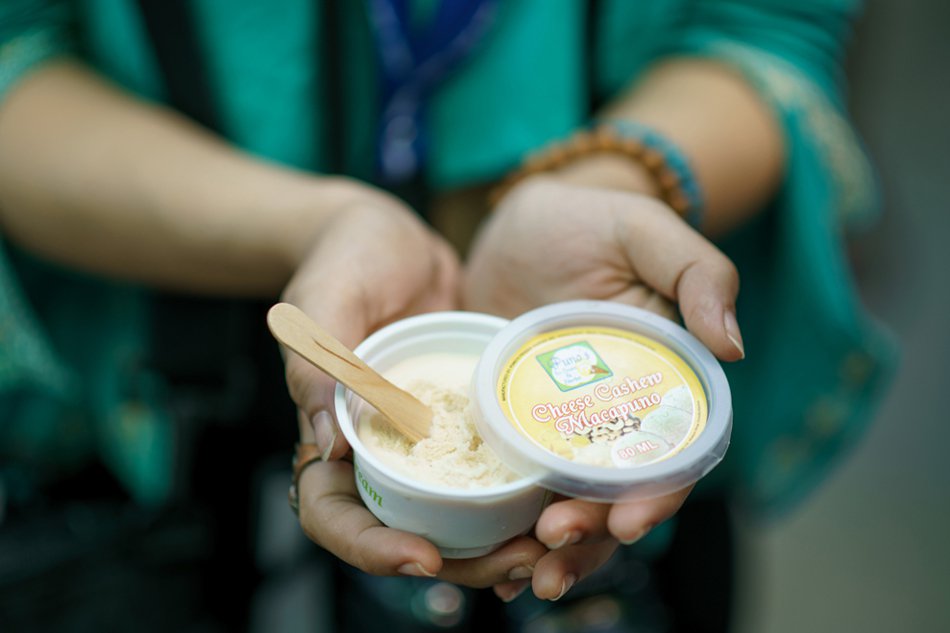
If tilapia ice cream is a bit too much for you, don’t worry. There are other tamer ice cream flavors out there. If you’re passing by Cabanatuan, be sure to try ice cream from Puno Ice Cream and Sherbet, the top homegrown ice cream brand which has been offering frozen treats to Novo Ecijanos for around six decades. Bestsellers include Cheese Cashew Macapuno ice cream and Buko sherbet with lychees. They also have other flavors including Ube Cheese, Strawberry, Fruit Salad, Cookies and Cream, Corn Queso, Chocolate with Cashew and Langka Cheese Cashew. Where to try it: Puno’s Ice Cream, Maharlika Highway, Bitas, Cabanatuan City, Nueva Ecija.
Pinapaitang kambing with alibangbang leaves

Pinapaitan is an Ilocano native delicacy composed mainly of goat innards or internal organs such as liver, intestines, heart and others. In Nueva Ecija, a local version involves cooking the broth in alibangbang or butterfly leaves, a souring agent similar to tamarind leaves. The result is not as sour as the traditional Ilocano papaitan that makes use of bile, but tastes closer to sinampalukan. This was one of the dishes served during a special catered lunch at Minalungao National Park, along with other interesting side dishes like ensaladang labanos (pickled radish salad), biya (goby) and ulang (crayfish). Where to try it: Minalungao National Park, General Tinio, Nueva Ecija
Boodle fight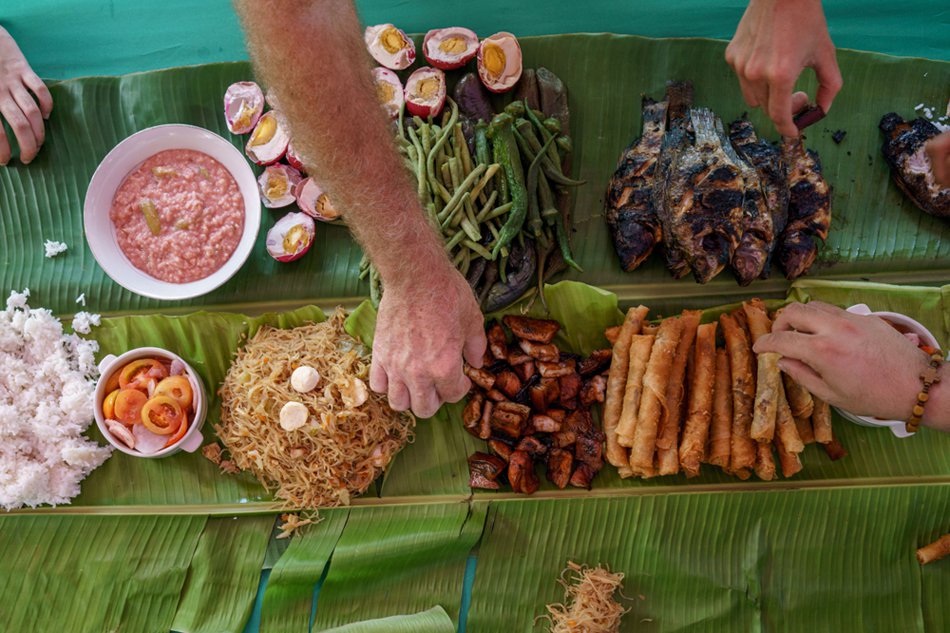
The military style of eating where food is prepared on a long table for people to eat with bare hands has become a culinary experience it itself, especially for city folk and balikbayans who have never tried it. Viands and rice are usually arranged on top of banana leaves for diners to choose from and eat with their bare hands. Meals like these, which usually consist of grilled meat, fish, local vegetables, salted duck egg, and pancit, are best for big groups. Where to try it: Crystal Wave Resort, Talavera, Nueva Ecija
Local kakanin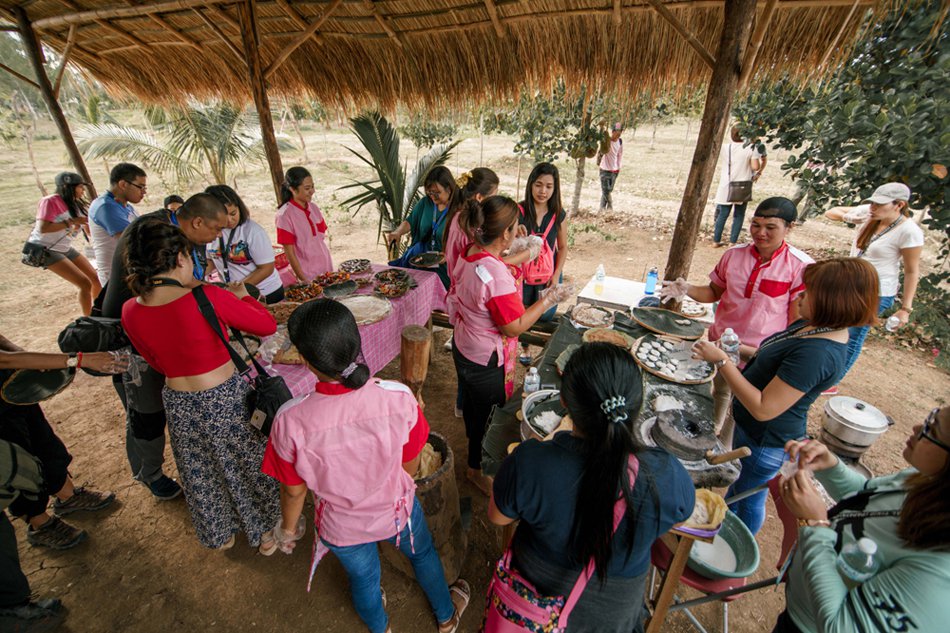
Since it’s the “rice granary of the Philippines,” you can expect that kakanin (native delicacies made from rice and root vegetables) is popular in the province. Instead of simply eating it, you can make your experience more unique by learning how to make it yourself. PMP Paradise Farms offers culinary tours where visitors can try making palitaw and nilupak among others. Palitaw is a small, sweet rice cake made from rice flour and water. The treats are sprinkled with sugar, coconut, and sesame seeds before serving. Nilupak is another delicacy made from either mashed cassava, sweet potatoes or cardaba bananas wrapped in banana leaves and served with margarine. Where to try it: PMP Paradise Farm, General Tinio, Nueva Ecija
Batotay and Cabanatuan longganisa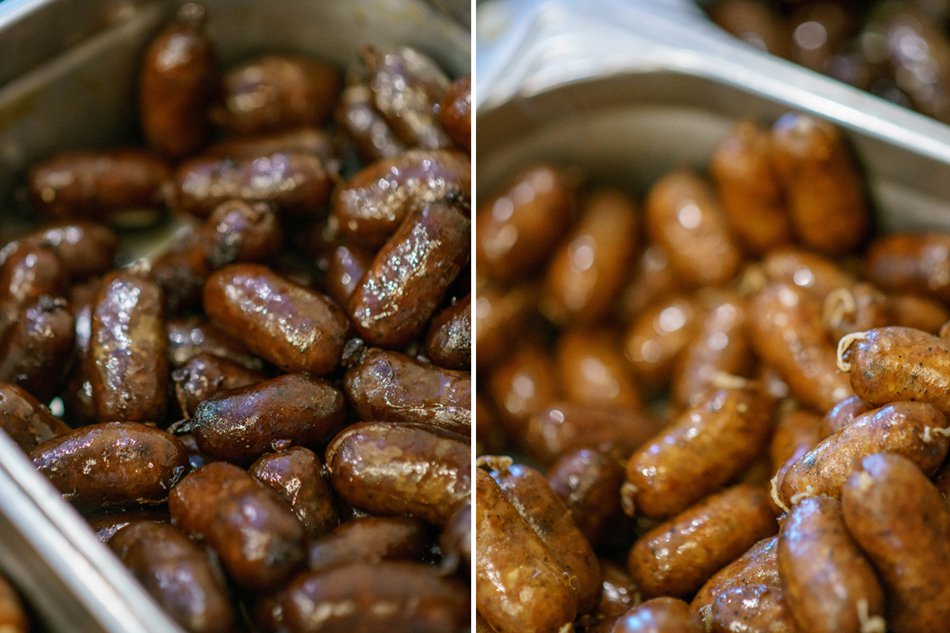
Every province seems to have its own version of longganisa and Nueva Ecija is no exception. For breakfast, be sure to try Cabanatuan garlic longganisa, a very savory variant of the well-loved sausage typically made of ground pork and spices. If you prefer your longganisa on the sweet side, try batotay, a beef-based longganisa coated with a distinctive sweet sauce. You can also pass by the wet market to buy strings of longganisa to take home. Where to try it: The Harvest Hotel. 1179 Pio del Pilar Street, Cabanatuan City, Nueva Ecija
Bangus spaghetti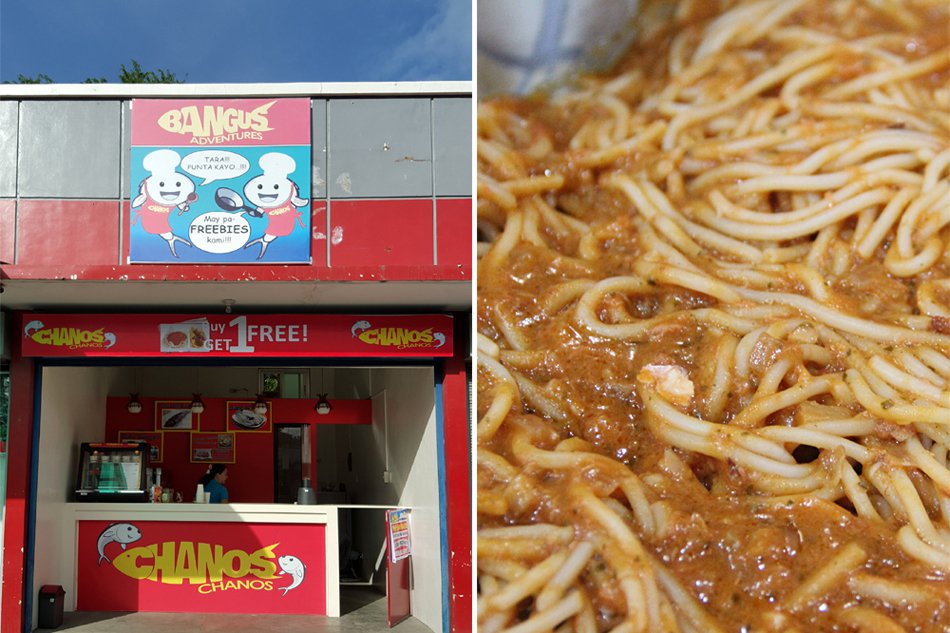
Chanos Chanos is a local family-run food stall that started serving baked bangus to their patrons in 2015 and opened their second branch in 2017. To encourage kids to eat more fish, they developed recipes that use bangus instead of meat, including spaghetti, nachos and sisig. Chanos Chanos' spaghetti uses bangus flakes with a creamy tomato sauce, resulting in a healthier yet still delicious family favorite. Seating is limited in their branch along Maharlika Highway, but it’s good for a quick road trip stop since they’re located near a gas station. Chanos Chanos can deliver trays and usually caters to large groups and events at the PhilRice Institute. Where to try it: Chanos Chanos, Maharlika Highway cor. Bayuga Street, Science City of Munoz, Nueva Ecija
Buko lumpia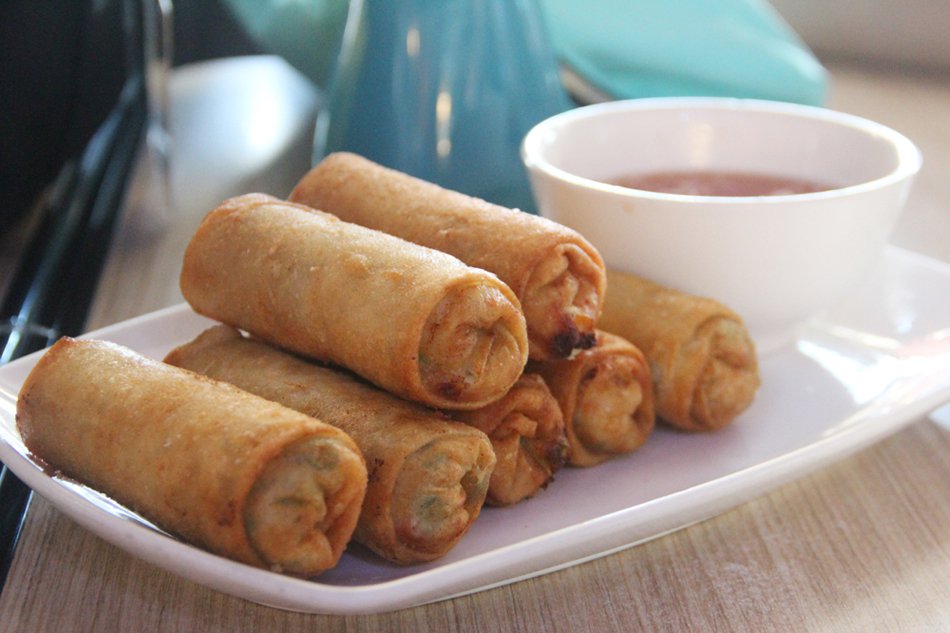
For coffee and milk tea lovers who want something modern and fresh, check out Caffe La Tea, the homegrown tea and coffee hangout in Cabanatuan City. Aside from serving mouth-watering beverages (like Dark Choco Rock, Salt and Cheese), they also serve appetizers, pasta, sandwiches and Pinoy rice toppings (try the Cabanatuan longganisa rice). One of the more unique items in the menu is Chiz Buco Lumpia, a regular lumpia filled with strips of coconut, veggies, ham and cheese. The spicy Deviled Tofu is also a must-try! Where to try it: Caffe La Tea, Robisons/NE Pacific Branch, KM. III Maharlika Highway, Cabantuan City, Nueva Ecija
Carabao's milk dairy products
While most people are very familiar with cow’s milk, milk from carabao or water buffaloes are popular here. Carabao's milk is said to be richer and creamier compared to cow's and goat's milk because of its high percentage of milk fat. Tourists can buy fresh carabao's milk and dairy products from Milka Krem, the dairy products outlet of the Philippine Carabao Center (PCC) in Munoz. Their innovative products include carabao mozzarella cheese, kesong puti, cream cheese, premium ice cream, flavored yogurt, and pastillas de leche. Where to try it: Milka Krem, Science City of Munoz, Nueva Ecija. The author was a media participant in Lakbay Norte 6, a media tour organized by North Philippines Visitors Bureau in partnership with Manila North Tollways Corporation/NLEX-SCTEX, Victory Liner, Inc., and the Nueva Ecija Convention and Visitors Bureau.